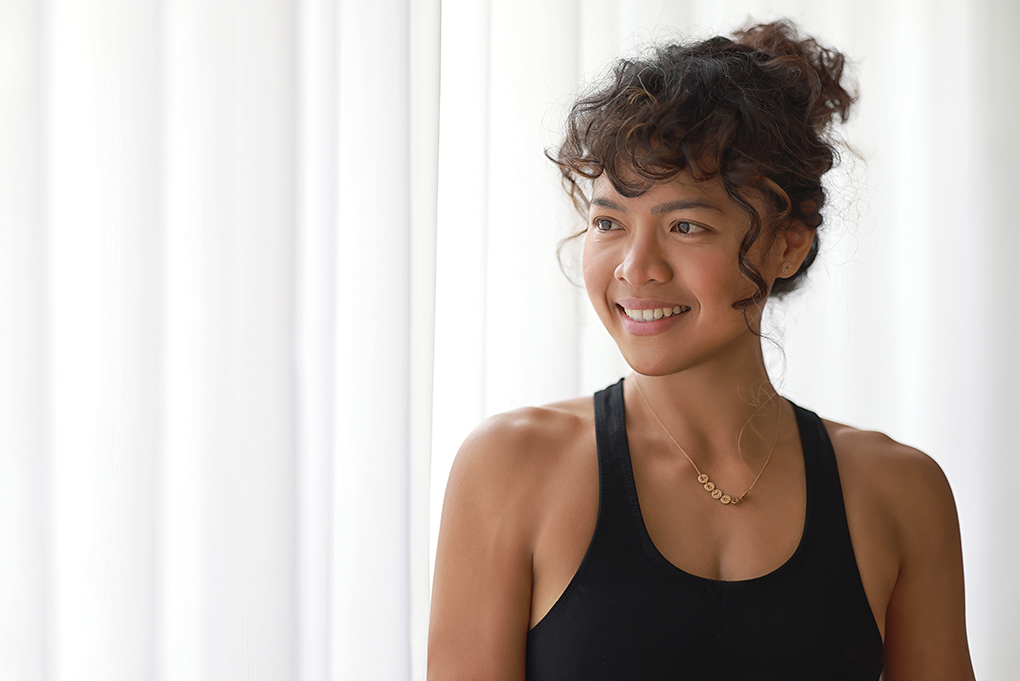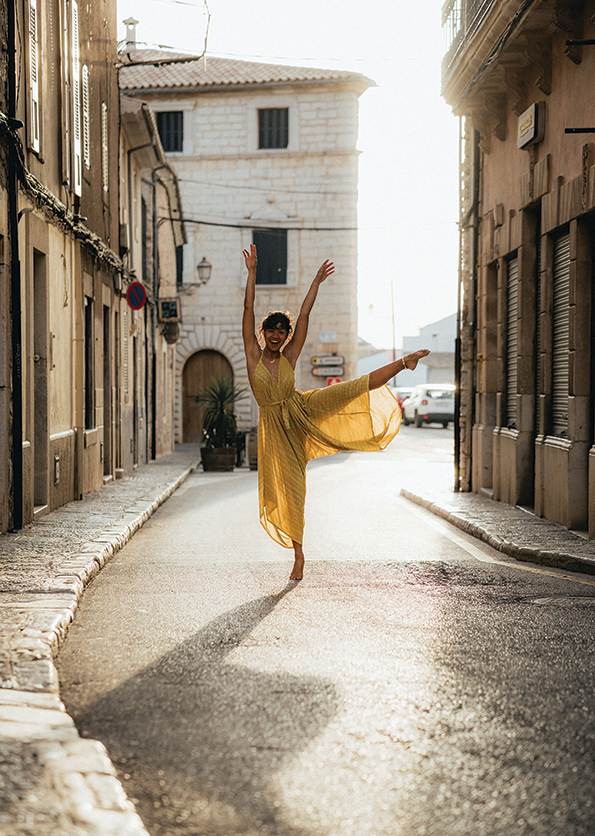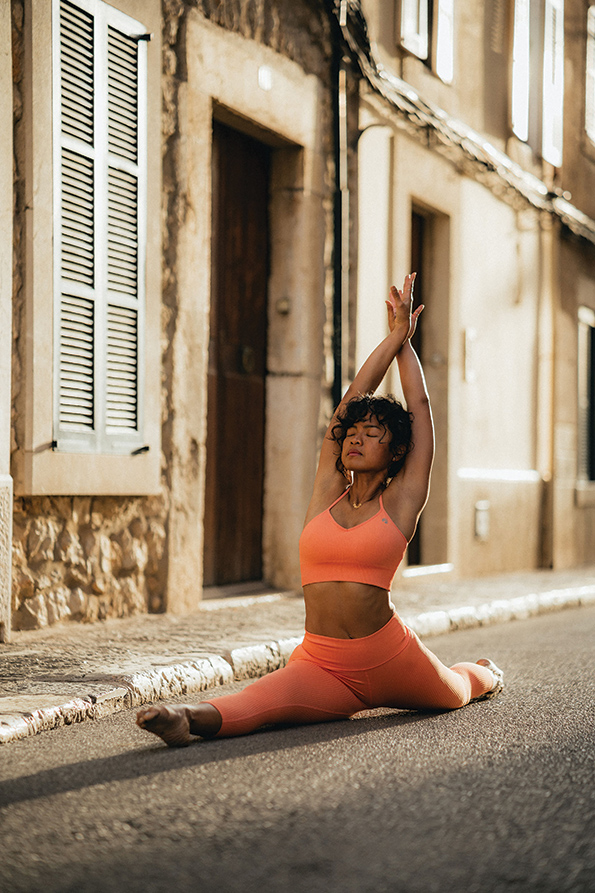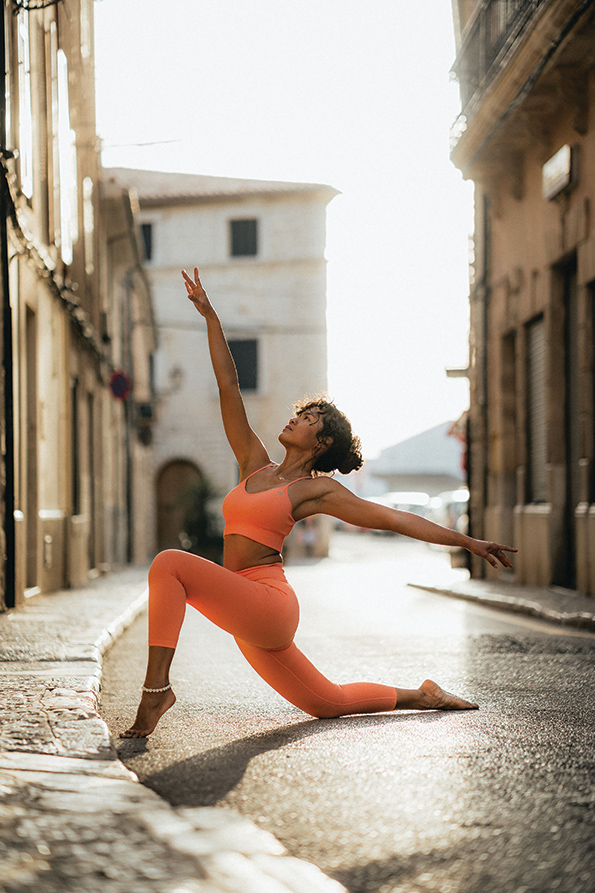Ditya Sari
Yoga has been a part of my life for nearly ten years: from Hatha to Ashtanga, Sivananda to Rocket. What I’ve come to love most about exploring various practices is how each one unlocks a new version of me, waiting for the right moment to be revealed.
Words: Lira Bekbolatova
This year, I found Inside Flow. And through it, I found Ditya. Little by little, lesson by lesson, Ditya has been transforming me, gently inviting my true self to show up. Then, one day, it just clicked: I felt my real, vulnerable essence flowing freely through my body.
Ditya, whose name in Sanskrit means “warrior of the sun”, radiates the light of her name in everything she does. Originally from Bali, she moved to Rome with nothing but a vision—to build a new life for herself from scratch. But what she truly created was more than just a life; she became a warrior, fighting for the inner light of each of her students. And, by grace, I am one of them.
I had the privilege of sitting down with Ditya Sari to explore what Inside Flow truly is, and to understand how she brings to life the profound transformations we’ve all experienced in her classes, myself included. We also dived into the mysterious concept of self-love.
Can you tell us a bit about yourself and your journey with yoga? How did you discover Inside Flow?
D.S.: I’ve been teaching yoga since 2012. I’m a certified Vinyasa, Chromatic Yoga, and Stand-Up Paddle Yoga instructor. I discovered Inside Flow in 2018—it was the first time Inside Flow arrived at the Bali Spirit Festival, and from that moment it completely changed my practice and my perspective.

D.S.: Teaching is something I could do forever. I love teaching Inside Flow because it allows me to guide from the heart. We connect music, breath, and movement into a powerful story, where every asana has a purpose and every transition is infused with intention. The more I share this practice, the more I discover about myself. Inside Flow brings out the best in me. The flow state keeps me present and allows me to connect deeply with myself.
Inside Flow is often described as a moving meditation. How does surrendering to the flow help to connect with your inner self?
D.S.: In Inside Flow, it’s not about perfecting postures—it’s about enjoying the journey from one pose to the next. This process allows us to lose ourselves in the flow state, a place where the past and future fall away, leaving only the present. Being in the now is what meditation is all about, and to truly connect with yourself, you have to stay in that moment.
Inside Flow sequences are choreographed to specific songs. How does the choice of music influence the emotional and energetic impact of the practice? And how do you choose songs?
Music is at the heart of the journey, flowing through the practice like a gentle current. When words aren’t enough, music speaks to our hearts. We choose songs that resonate with many people, making sure everyone can connect with the story the song tells. Each song has its own tale—some uplift and empower, others stir deep emotions, and some simply bring joy and fun. We embrace the full spectrum of feelings through different styles of music. This helps us accept every part of ourselves and all the emotions we carry, celebrating our unique beauty.


Many people struggle with self-worth due to negative patterns learned in the past. How can movement, specifically Inside Flow, help in unlearning these patterns?
Inside Flow is an invitation to embark on a journey of self-discovery and connection. Movement itself is a powerful healing tool. In Inside Flow, we use music to embody our movements, allowing us to connect more deeply with our senses and strengthen the bond between mind, heart, and body. Storytelling is woven into the practice to inspire and empower, creating a safe space where you can release emotions. And the best part? You’re not alone in it. These elements are key to healing and setting the stage for transformation. An Inside Flow session is unlike a traditional yoga class—it’s the beginning of breaking free from old habits that hold you back.
In your experience, have you seen transformations in people who consistently practise Inside Flow? Can you share a moment that deeply moved you?
D.S.: A fellow Flow mate from Japan, who had been diagnosed with a chronic mental health condition, overcame her illness through regular Inside Flow practice. Her doctor observed that her body began producing high levels of oxytocin, which alleviated her depressive symptoms. She had relied on medication for most of her life, but after discovering Inside Flow, she now lives without it. There’s great power in synchronising your breath and movement at the exact same speed, supported by the rhythm of the music. It creates a profound awareness—and I believe Inside Flow helps the body naturally produce those oxytocin levels during practice.
Self-love is often confused with self-indulgence or external validation. From a yogic perspective, what does self-love truly mean?
D.S.: To me, self-love is about acknowledging and appreciating both your strengths and your quirks. It’s giving yourself space to grow while taking care of your inner self. Embracing who you are, while continually striving for personal growth, is at the heart of this journey of self-love.

